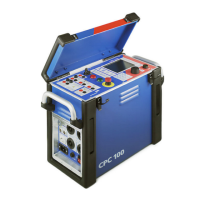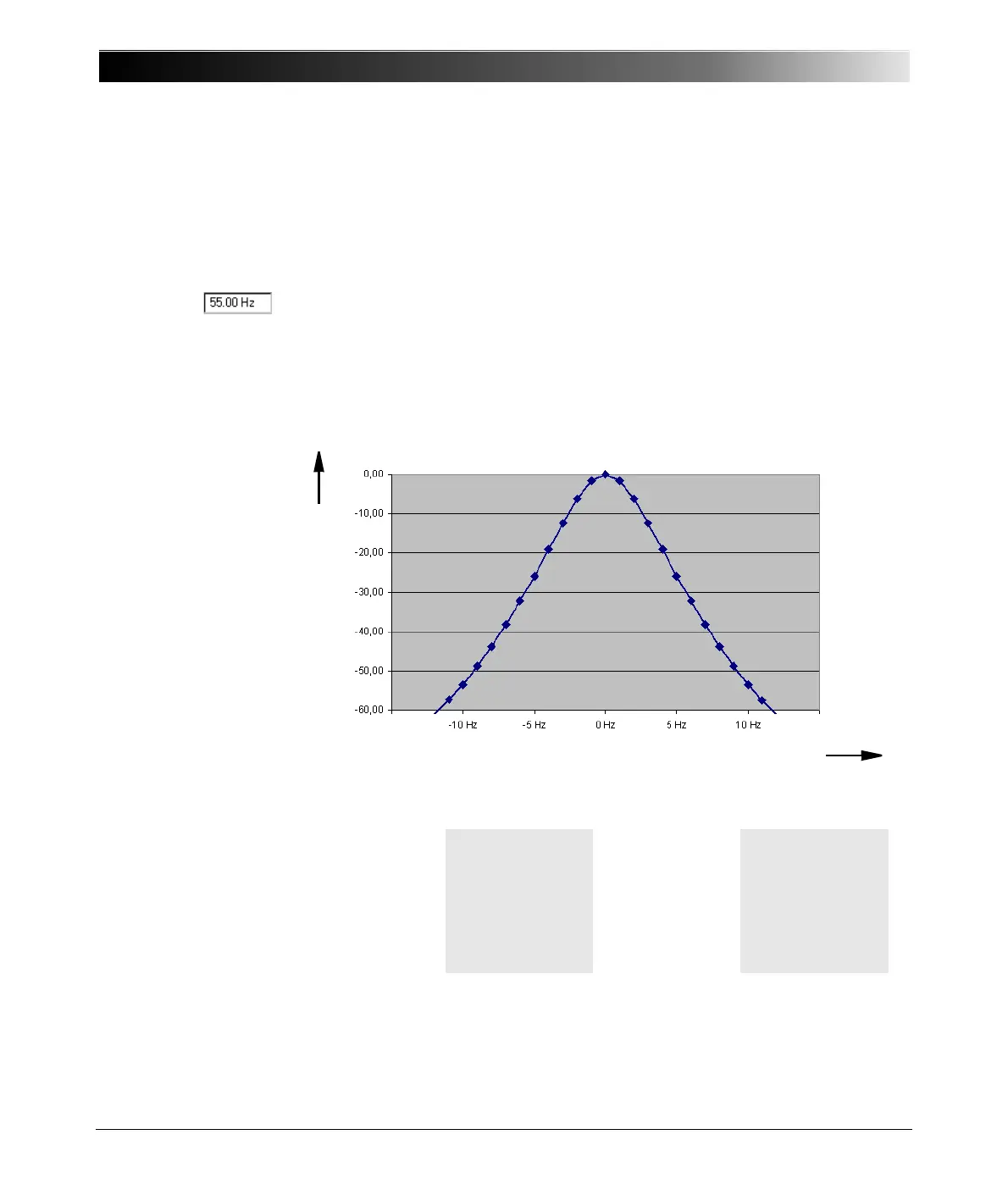CPC 100 V1.41
3 - 6
The Frequency-Selective Measurement
The frequency-selective measurement is used to filter out interferences as they
usually occur in substations. To do so, the frequency of the CPC 100 output
quantity is set to a value different from the substation’s frequency, for example,
the substation operates with a frequency of 50Hz, the CPC 100 output
frequency is set to 55Hz.
The quantity measured back at the CPC 100 input is measured selectively, that
is, only a quantity with the specified frequency is fully taken into consideration
for the measurement. Quantities with different frequencies are filtered out
according to the characteristics shown in Figure 2.
Figure 2:
Characteristics of the
frequency-selective
measurement
Apart from Quick, the frequency-selective measurement is also available for
other test cards:
In Quick, Sequencer and Ramping the frequency-selective measurement is
selectable, whereas at the other test cards, it is preset and cannot be cleared.
CT
•CTRatio
• CTBurden
•CTRatioV
• CTLowPower
VT
•VTRatio
• VTBurden
• VTElectronics
Transformer
• TRRatio
Others
• Sequencer
• Ramping
Amplitude in dB
f in Hz
Offset from output frequency

